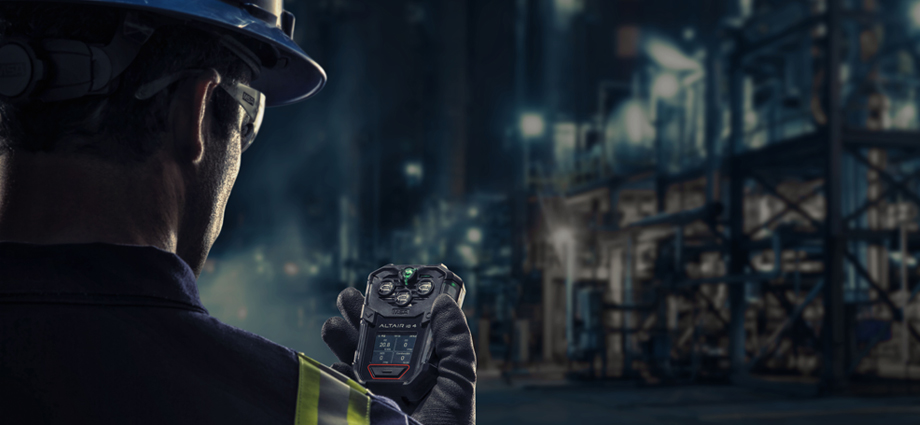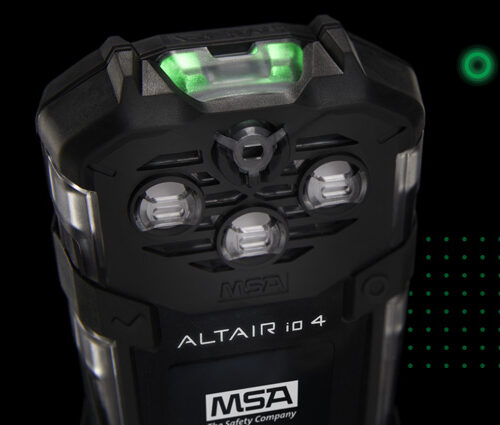
Portable gas detectors are used across many industries to detect hazardous gases, oxygen-rich or deprived environments, and atmospheres that are immediately dangerous to life or health (IDLH). These devices should be routinely tested and calibrated to verify they are functioning properly.
The applications for portable gas detectors are wide-ranging and can include situations with unique potential hazards, like confirming a safe atmosphere in confined space entry or checking for potentially dangerous environments during plant turnarounds and maintenance. Portable gas detectors can help keep workers involved in these situations safe. Calibrations and bump tests are important steps in ensuring the devices are compliant for use.
What is the difference between calibration and a bump test?
While both calibrations and bump tests involve introducing gases to the sensors, the purpose of each test is different. The purpose of calibration is to address sensor shift. During the life of a gas detector, the sensors that detect gases may lose sensitivity, referred to as sensor shift. Though the sensitivity changes, the sensor is still functional and can be re-calibrated to continue to accurately detect the intended gases until the end of its life.
The calibration process involves introducing a known quantity of “challenge gases” to the device and the sensors will produce a readout ranging from “pass with no adjustments,” “pass with adjustments made,” or “fail.” A “pass with no adjustments” means the sensors are reading the gas quantity of level as they should, and no adjustments are needed to the sensors. A “pass with adjustments” means sensors are beginning to lose some sensitivity but are still functional and capable of performing after some adjustments to account for changes in sensitivity. A “fail” could mean too much sensor degradation has occurred and the sensors are no longer capable of functioning properly. In this instance, the sensor(s) reading outside of the allowable range would require replacement.
When it comes to bump testing, the process is similar but the purpose is different. A bump test also involves introducing known quantities of gases to the sensor. However, the purposes are to check both that there are no obstructions preventing gases from reaching the sensors and that the sensors and device are functioning as intended. The entire device response is tested in a bump test to make sure things like audible alarms, LED lights, vibrations, and any other alert features are working as intended. A bump test will typically be much shorter in duration compared to a calibration test, typically around 15 to 20 seconds compared to 1 to 2 minutes for a calibration. Unlike a calibration, the bump test will only check that the sensors are working and reading the introduced gas within the acceptable range. Recalibrations to account for sensor shift will not happen during a bump test.
How often should bump tests and calibration tests be preformed?
Another difference between the two types of tests is the frequency they are performed. MSA recommends calibration at least every six months; however, many countries and/or organizations have their own calibration guidelines that may require more frequent calibrations.
So when should a bump test be performed? Bump test frequency is often stipulated by national or corporate regulations; however, bump testing before each day’s use is generally the accepted best safety practice. MSA advises performing a bump test more frequently if the device is subjected to physical shock or high levels of contaminants.
What other benefits come from proper calibration and bump testing of gas detectors?
- Safety: Proper calibrations and bump tests help verify that a gas detector is working properly. If a gas detector is not properly maintained, the results may not be accurate which can impact the health and safety of workers entering a potentially hazardous space or environment.
- Compliance: Regular calibrations are required for compliance under certain state and federal laws or industry standards. Verifying gas detectors are working can help prevent fines associated with non-compliant detector usage.
- Productivity: Properly calibrated and bump tested gas detectors can help reduce the risk of costly incidents or work stoppages from gas leaks or exposure. For example, early detection of a gas leak during routine maintenance could help prevent costly and time-consuming projects such as replenishing leaking gases, repairing and replacing equipment following possible explosions, or remediation and cleaning up from large leaks that could harm workers, the environment, and surrounding communities.
How to help simplify maintenance and compliance of your portable gas detector fleet?
Staying up-to-date with the latest connected gas detection solutions is one way to help simplify the maintenance – including calibrations and bump tests – and compliance of your fleet. The MSA ALTAIR io™ 4 Gas Detection Wearable is a connected device that comes with built in cellular connectivity and integration with MSA Grid software and the ALTAIR io™ Dock. Key features include:
- Enhanced Fleet Management and Monitoring: Grid software provides a suite of powerful fleet management and monitoring capabilities including over-the-air updates for all of your devices, lifetime cloud logs with full device history, and fleet cloud configurations to align with your organization’s SOP.
- Automated Calibrations and Bump Tests: The ALTAIR io Dock helps further simplify calibration and bump testing procedures. When an ALTAIR io 4 device is in the Dock, the unit knows when it needs a calibration or bump test based on settings established by the user, and automatically performs the appropriate function. All compliance reporting is sent immediately to the Grid, helping to minimize the risks associated with manual record keeping or data file management.
- Anticipated Calibration Gas Refills: MSA+ Autofill – an option with an MSA+ subscription including ALTAIR io 4 devices and Grid – can help ensure you have the right gas ready when you need it for daily bump tests and fleet calibrations. Autofill allows you to spend less time planning and managing inventory while avoiding unnecessary downtime due to expired or empty cylinders. The ALTAIR io Dock automatically sends an alert when your cal gas supply is running low. With the click of a button, replacement cylinders will arrive at the designated location within days.
Ready to streamline your gas detector compliance and maintenance?
These features are just a few of the many benefits available with the ALTAIR io 4 and Grid. Want to see the instrument in action? Watch a brief video demo of the unit in action to learn more.







